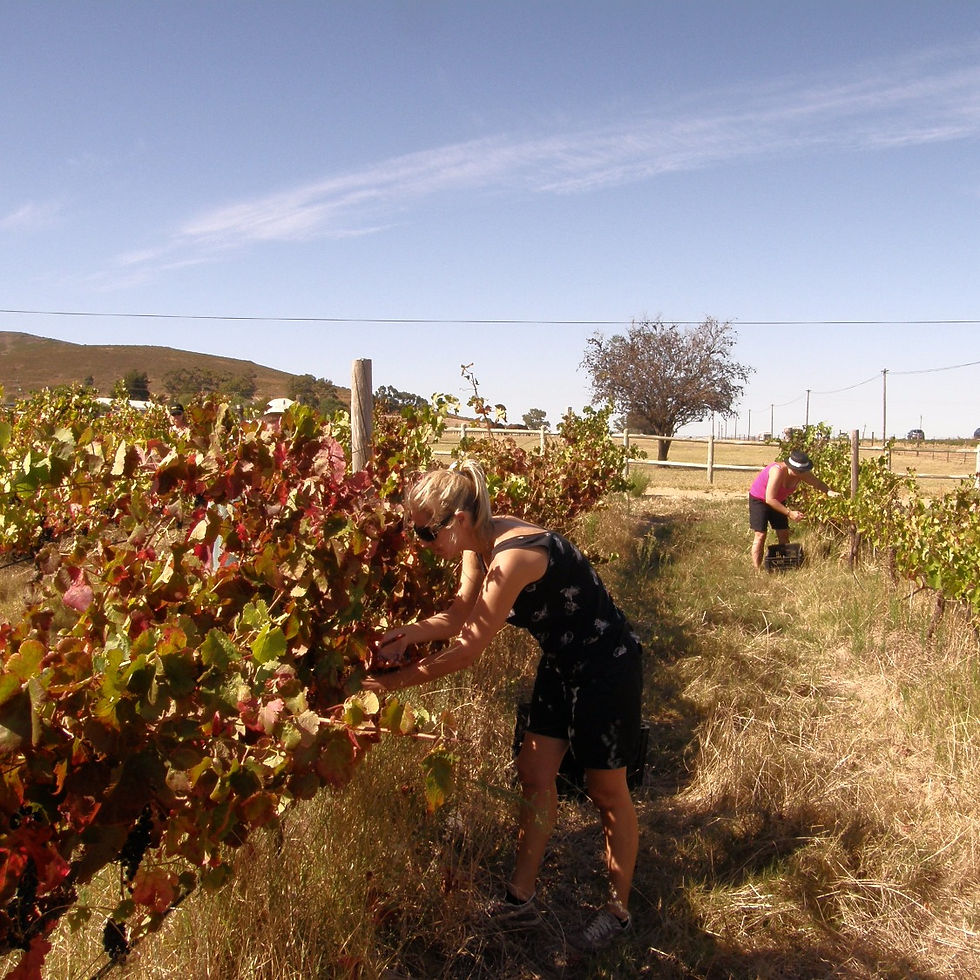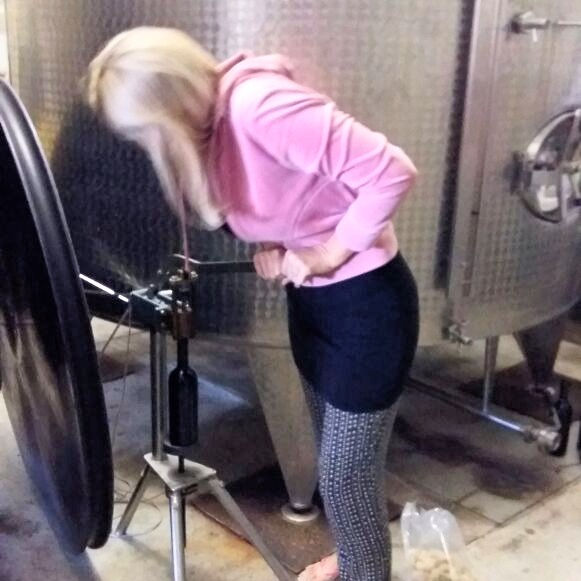The wine cycle
- Kim Rabe

- Nov 23, 2016
- 3 min read
In the vineyard
In South Africa, our wine cycle starts around September when the vineyards first buds begin to break, berry growth begins in summer and will change colour as the grapes begin to ripen. When grapes have reached optimum ripeness harvesting takes place, normally between late January and March but sometimes later say in the case of grapes that are left to raisen for late harvest wines. Hand harvesting is still the preferred method here and farm laborers’ will work tirelessly to pick all grapes within the short time frame to ensure optimal ripeness.


From Harvest to the cellar
Once in the cellar, the wine-making techniques employed will vary according to the style of wine being made and from one winemaker to the next but in general, these are the basic steps that will take place.
The grapes will first be destemmed and crushed to release their juices. Sulphur dioxide is commonly added to prevent oxidization of the wine. White Wine grapes will then be transported to a press which extracts the juice and leaves behind the grape skins. This pure juice will undergo a settling period under controlled temperature where sediment settles to the bottom of the tank. The juice is then filtered or “racked” into another tank to remove all sediment before fermentation starts.


Fermentation
When it comes to red wine, the lightly crushed grapes are placed into fermentation bins along with their skins for several days, the skins impart the red colour and tannin's to a red wine. Yeast is normally added to both red and white wines to aid fermentation though some winemakers prefer minimal intervention and rely on yeast which naturally inhabits cellars and grape skins to do the job. Temperature control is very important at all stages for the yeast to function properly.

During fermentation carbon dioxide is released, which causes the skins in the red wine vats to rise to the top, winemakers must punch down the skins several times a day to keep the skins in contact with the juice. A second fermentation process named malolactic fermentation is fairly standard for most red wine and converts malic acid into lactic acid which is said to improve the flavor and body of a wine. Red wine will then be pressed and racked to clarify the wine.



Aging
The wines are then ready for aging, which opens up many possibilities. Aging can be done in stainless steel or oak. Different types of oak barrels are available for example French, Hungarian and American oak all impart different qualities to a wine. A winemaker can choose whether to use new or older oak barrels and for how long aging should take place. White wines are aged for shorter periods than reds and although some styles of white wine require oak maturation this is more commonly used in red wines. Wines intended for a blend or normally matured separately and blended after.


Bottling to drinking
The final phase includes bottling the wine, which can be done by hand or automated and then finally labeling the bottles. Some wines are made ready to drink, whilst others can be cellared for longer and may, in fact, benefit from further bottle aging. At last, though it is time to open that bottle and enjoy the sensory pleasure that tells the story of this incredible journey that has taken those grapes from the vineyard to your glass.






Comments